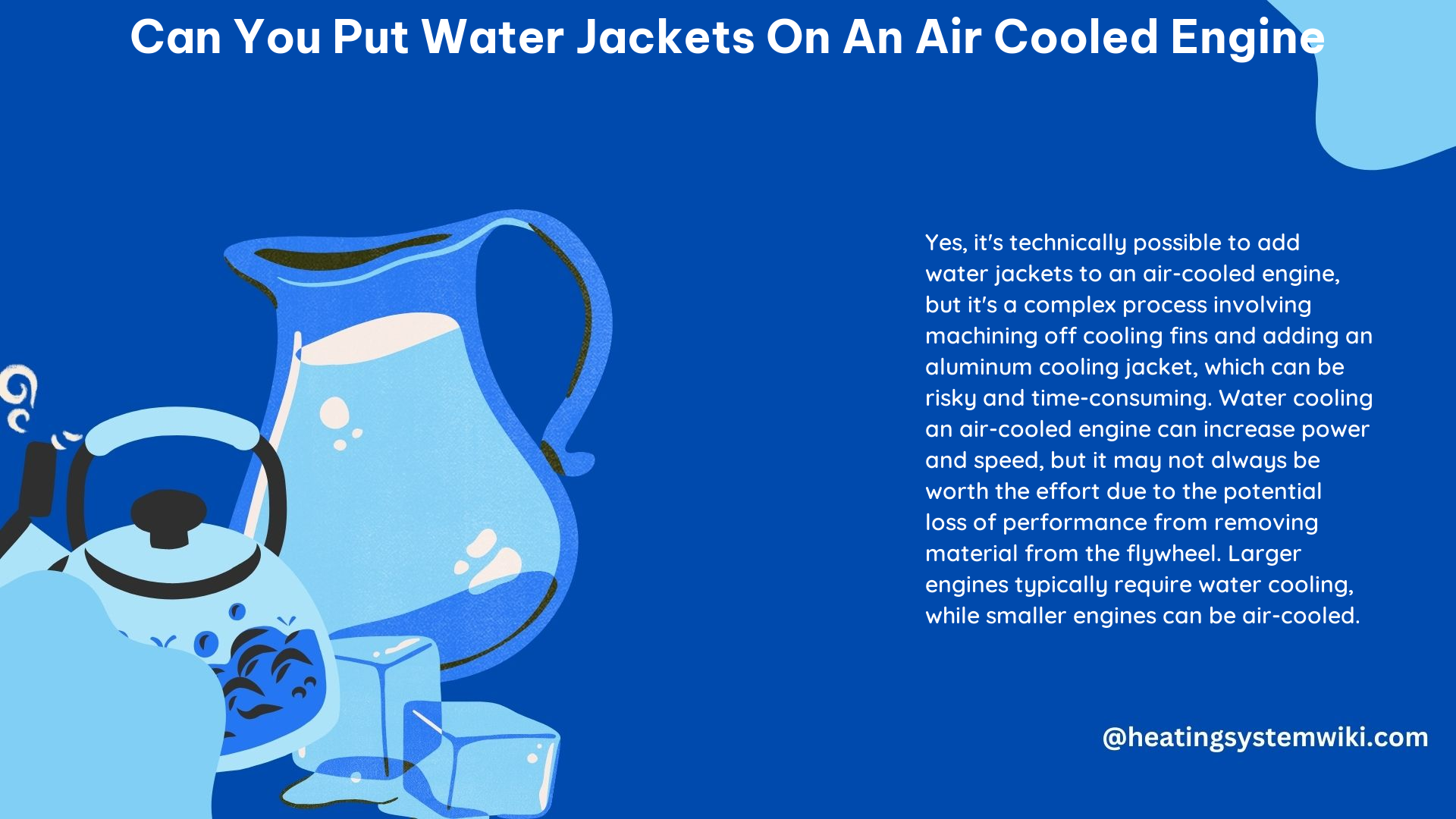Can you put water jackets on an air-cooled engine? The answer is yes, but it’s not a simple process. Water jackets can be added to an air-cooled engine to convert it to a liquid-cooled engine, but it requires significant modifications, including machining off several cooling fins and adding an aluminum cooling jacket. This process can be time-consuming, challenging, and may not always yield satisfactory results, as it can affect the engine’s power and speed.
Factors to Consider
When considering adding water jackets to an air-cooled engine, several factors must be taken into account:
-
Flywheel Modification: The engine’s flywheel has large fins that aid in cooling. Removing these fins can negatively impact the engine’s performance, as they play a crucial role in power and speed. Additionally, modifying the flywheel can be dangerous, as it is a critical component of the engine.
-
Head Gasket Seals: Some engines have ‘dry deck’ head gasket seals, which make it easier to add water jackets. However, engines with sandwich-type head gaskets may require more extensive modifications.
-
Cooling Efficiency: The addition of water jackets can affect the engine’s cooling efficiency, as the water jacket system may not be as effective as the original air-cooling system. This can lead to reduced power and speed.
-
Complexity and Risks: Converting an air-cooled engine to a liquid-cooled system is a complex and challenging process that requires significant modifications. It’s essential to plan carefully and consider all the potential risks and challenges before deciding to modify an air-cooled engine.
Technical Specifications

The process of adding water jackets to an air-cooled engine involves the following technical specifications:
- Machining off Cooling Fins: The engine’s cooling fins must be machined off to create space for the water jacket.
- Aluminum Cooling Jacket: An aluminum cooling jacket must be designed and fabricated to fit the engine’s cylinders and heads.
- Sealing the Jacket: The cooling jacket must be sealed with silicon and/or “o” rings to prevent leaks.
- Flywheel Modification: The engine’s flywheel may need to be modified to accommodate the water jacket system.
- Head Gasket Seal Considerations: The engine’s head gasket seals must be carefully considered and planned for, as they can impact the water jacket installation.
DIY Steps
If you decide to add water jackets to an air-cooled engine, the following DIY steps can be followed:
- Remove the engine’s cooling fins using machining tools, such as a milling machine or a grinder.
- Create an aluminum cooling jacket that fits the engine’s cylinders and heads. This may require custom fabrication or the use of a pre-made water jacket kit.
- Seal the jacket with silicon and/or “o” rings to prevent leaks.
- Modify the engine’s flywheel, if necessary, to accommodate the water jacket system.
- Consider the engine’s head gasket seals and plan accordingly, as they can impact the water jacket installation.
- Test the engine thoroughly to ensure proper cooling and performance.
Conclusion
While it is possible to put water jackets on an air-cooled engine, it’s a complex and challenging process that requires significant modifications. It’s crucial to consider all the potential risks and challenges before deciding to modify an air-cooled engine for water cooling. In some cases, it may be more practical to purchase a water-cooled engine instead of modifying an air-cooled one.
